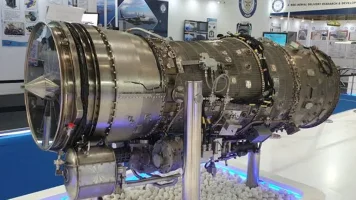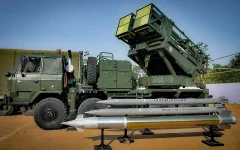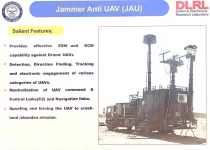- Views: 2K
- Replies: 5
In a landmark decision aimed at bolstering India's indigenous defence sector, the Defence Research and Development Organisation (DRDO) has introduced a competitive bidding process for its ambitious Advanced Medium Combat Aircraft (AMCA) programme.
The new model allows private companies to participate alongside public sector undertakings in the development of India's first fifth-generation stealth fighter, a major step forward for the 'Make in India' initiative in high-technology defence projects.
DRDO Chairman, Dr. Samir V. Kamat, confirmed that the execution framework for the AMCA has been officially approved. He laid out an ambitious schedule, targeting the first flight of a prototype by late 2029 and the commencement of series production by 2035.
"The execution model of AMCA has been approved. HAL can bid, the private sector can bid, they can also bid as a joint venture," Dr. Kamat announced, signalling a significant shift from the traditional reliance on state-owned enterprises.
This opens the door for established private defence firms like Tata Advanced Systems, Larsen & Toubro, and others to play a crucial role in manufacturing a frontline combat aircraft.
The project, which received clearance from the Cabinet Committee on Security in August 2024, has an initial development budget of approximately ₹15,000 crore for the creation of five prototypes.
This strategic move is expected to leverage the innovation, efficiency, and expertise of the private sector, accelerating the development timeline and enhancing the nation's defence manufacturing ecosystem.
A New Generation of Air Power
The AMCA is a fifth-generation aircraft, placing it in an elite category of fighter jets defined by advanced stealth, superior avionics, and high-performance capabilities.Designed by the DRDO's Aeronautical Development Agency (ADA), the twin-engine, 25-tonne aircraft is envisioned as a multi-role fighter capable of achieving air superiority and conducting precision ground attacks.
Key features of the AMCA include:
- Stealth Technology: A specialised design and internal weapons bays will minimise its visibility to enemy radar, a critical advantage in modern warfare.
- Advanced Avionics: It will be equipped with a state-of-the-art Active Electronically Scanned Array (AESA) radar for enhanced target detection and tracking.
- Super-cruise Capability: The aircraft will be able to fly at sustained supersonic speeds without using fuel-guzzling afterburners.
Its development is seen as essential to counter the growing air capabilities in the region, including China’s J-20 stealth fighter. The IAF has a planned requirement for 125 AMCA jets, which will be inducted into seven squadrons.
Phased Development and International Collaboration
The aircraft's development is planned in two distinct phases.The initial AMCA Mk-1 will be powered by the American General Electric F414 engine. The subsequent AMCA Mk-2 is slated to feature a more powerful, next-generation engine to be co-developed with an international partner, with companies like Safran of France and Rolls-Royce from the UK being potential collaborators.
This two-phase approach allows for the timely rollout of the initial version while ensuring the future variant incorporates more advanced and indigenously-supported propulsion technology.
Project Timeline
Dr. Kamat provided a clear roadmap for the project's key milestones:- End of 2029: The first AMCA prototype is scheduled to make its maiden flight. Five prototypes will be built for rigorous testing.
- 2034: Full development of the aircraft is expected to be completed.
- 2035: Series production is slated to begin, with an emphasis on sourcing over 70% of components from within India.




